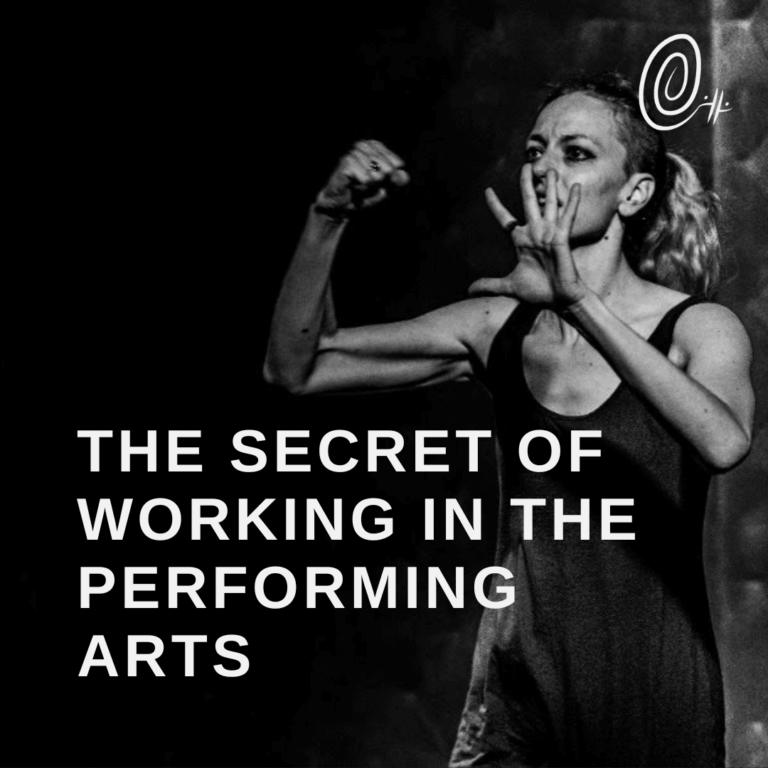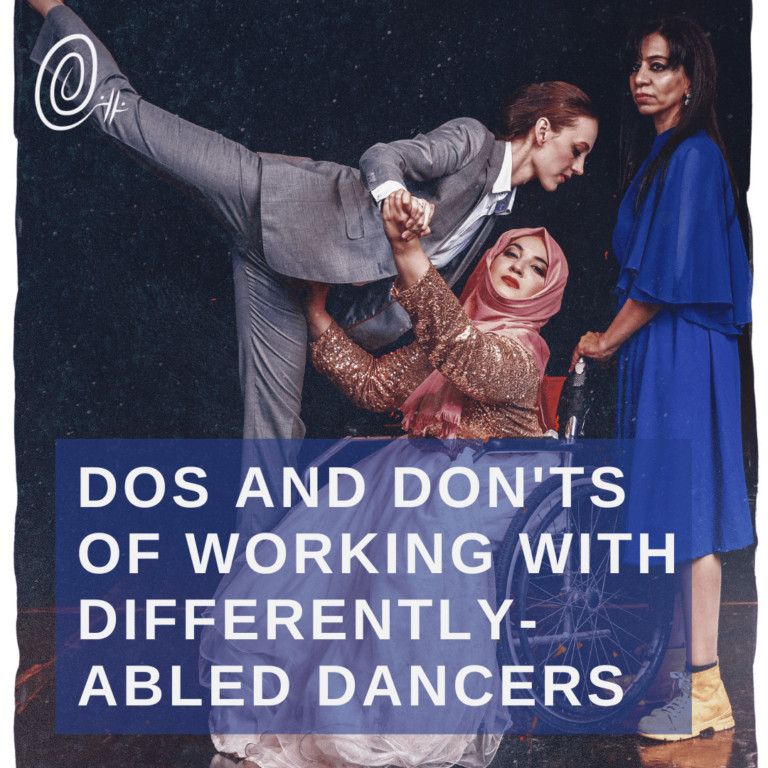Hubs for Contemporary Dance Abroad that Will Surprise You
When it comes to hubs for contemporary dance, most people you ask will say the US and Europe. They might be able to identify cities like New York, Amsterdam, or London. Generally, we assume that contemporary dance is a western thing, and when it appears globally, it’s in festivals or these western companies touring.
I have a different perspective, though. For the last eleven years, I’ve been working as an independent contemporary dancer in non western countries. I’ve choreographed backup dancers for Cambodian television, presented work at international festivals in Asia, danced for a professional company in South Korea, and more. I currently live in Pakistan. Because my entire career has taken place thus far outside of the west, I’ve gotten to know of a few large contemporary dance hubs that are not in Europe or the US.
The three that I’ll take about in this blog are Burkina Faso, Taiwan, and South Korea. I’ve chosen these as I’ve experienced all of them in the dance context in some way – studying, visiting, or living. Singapore is another hub, though I’ve not visited, so I can’t discuss in detail. There’s also Malaysia, which can’t be overlooked, and I did actually attend two separate international dance festivals there, but I know less about it so I’m focusing on the others.
Contemporary dance has a complicated history with Asia.
Indeed some of its pioneers (ie Ruth St Denis) drew heavily from eastern and Orientalist themes as way of creating something new and exotic. Of course their vision of the east was from a romanticized western outsider perspective, the east ‘as the west wants to see it.’ Even now, we think of contemporary dance as fully western, and its appearance in other places in the world as either evidence of western imperialism or the monoculture of globalization.
My point in writing about these non-western hubs is to show that contemporary dance, while perhaps “from” the west, is not the domain of the west. Contemporary is a complicated and broad style that draws on ‘now,’ and looks to find its own path within the context.
World class choreographers and dancers in Burkina Faso
In 2018, I spent five weeks in the capital of Burkina Faso, Ougadougou, for a residency program designed by Olivier Tarpaga, award winning choreographer and musician. I’d met Olivier in Seoul through a mutual acquaintance, my mentor HeJin Jang, and was fascinated by his approach to movement and music. He also represented a wealth of knowledge and experience that I knew nothing about, which meant I was immediately intrigued. During our discussions, he invited me to participate in the residency in Burkina. It took me a few years to make it happen, but I managed it.
Olivier had told me that Burkina was a hub for contemporary dance, but being there made me understand that actually, the country is home to world-class dancers and choreographers, a few of which were the mentors and teachers for the residency. While the facilities and theaters weren’t perhaps as rich or fancy as others I’ve seen, the quality of the work was as high or higher than anything I’ve seen.
The center that hosted the residency is constantly full of residencies and classes, which are both contemporary dance and local tribal dances – please note that “African dance” is not actually a thing, as I learned, as there are as many dances as there are languages, and there are a LOT of languages. One of the co-directors of the center and also a mentor for the residency, Seydou Boro, is one of the most accomplished people I’ve ever met, as choreographer, dancer, academic, musician, and I’m sure much more. Some years after the residency, I found a snippet of a paper written by him in a book called “Dance: Documents of Contemporary Art.”
Ongoing creation
The ongoing political situation I’m sure makes things difficult – but I’m also sure that dance is still happening, and maybe one day I’ll be able to go back. In the meantime, Olivier continues to bring Burkina talent to the global stage, with his band, Dafra Kura Band, and his company, Baker & Tarpaga Dance Project. I was lucky enough to watch him work with his dancers while I was there and witness an in-progress performance of his work “When Birds Refused to Fly,” and it was both powerful and well-crafted.
It’s important to note that everything I saw in Burkina was deeply contemporary. It reflected, in some ways, the various styles in which the dancers train; however, I would not call it “fusion,” which is usually what westerners call local versions of contemporary when they don’t want to share the contemporary label with anyone who’s not doing Cunningham or Graham-based work. It was contemporary movement with contemporary philosophy.
This is also what I noticed when I visited Taiwan.
Cloud Gate Opens the Door in Taiwan
One cannot talk about contemporary dance without talking about Cloud Gate Dance Company. It was formed in 1973 by choreographer Lin Hwai-Min, at which point there were no contemporary dance companies or schools. Now, there are universities and festivals, and Cloud Gate regularly tours the world with new projects.
I visited Taipei in 2013 for a conference of the World Dance Alliance, Asia Pacific Chapter. At the time I was still learning a lot about this whole world which was “not-America” and not processing too much, but I remember dealing with a lot of imposter syndrome, learning a lot at the various meetings and panels, and watching a Cloud Gate performance.
Like Burkina and the dance I saw there, there was and is no question whatsoever that Cloud Gate’s work is contemporary dance. It was influenced by its context, much like the post-modern contemporary dance in the US was influenced by the social movements around it. But it was not fusion. It wasn’t traditional. It was contemporary.
Aside from Cloud Gate, Taiwan is home to many smaller contemporary dance companies and studios, and the Taipei National University of the Arts has a dance program. I briefly considered moving to Taipei when I was moving on from Cambodia. Eventually, though, I decided on Seoul, South Korea, which I will discuss next.
An explosion of contemporary dance in Seoul
My first experience with Korean contemporary dance was in Malaysia in 2014 at a dance festival, watching a performance by a group called Modern Table Dance Company led by Jae-Duk Kim. It was the most incredible, energetic, and different thing I’d ever seen, and I – a 23-year-old wet-behind-the-ears wide-eyed kid – was deeply interested, and deeply jealous. They represented everything I wanted to become.
It was a factor into why I eventually chose to move to Seoul the next year. The sheer amount of work being done, the amount of universities with both programs and companies, the amount of world-class festivals – if you were someone in contemporary dance, you’d been to Seoul.
I can’t quickly or easily describe everything I witnessed in Seoul. I worked most with two companies: first, with Second Nature Dance Company as a guest member and later as a full member, and second, Trust Dance Theatre, where I almost got more training in 2.5 years than I did during university, which also performed and worked with disabled dancers. However, I did a short community project with the Eun Ahn-Me company, one of the craziest choreographers I’ve ever met and even crazier dancers. I had incredible mentors in HeJin Jang and Soon-ho Park. I met and learned from so many others in the industry there, both formally through avenues such as trainings at the national contemporary dance company and informally.
The problem of ‘contemporary’
Quite frankly, it would be an insult to the dance industry in Korea to even question if it is contemporary or not. Like the other places, I see influences of the culture, the history, and the context, all things which I think are necessary for the style to even be called contemporary. Without that it’s just ungrounded, unbased movement that corresponds to something that someone long ago thought up. Contemporary must be present and embedded.
There are certain “ways of moving” and ways of creating that are common throughout all these places. They seek to find expression and meaning, in whatever way, through the movement. They use the body in an open, exploratory way. Put next to each other, they do carry certain threads. But the contemporary in these hubs is not a western copy, and it does not seek to be western. It does sometimes struggle with the western legacy and the forms of movement and training, and I’ve read some really interesting academic research on the struggle of ‘intercultural’ training responding to the western movement hegemony.
There’s much more to discuss and hash through but this blog post is already novel length so I’m going to wrap it up. The main idea is just to share that there is a big old wide world out there of contemporary dance. While there is a conception that the style is only present or belonging to the west, some of the biggest hubs with the most exciting work are not western at all.







